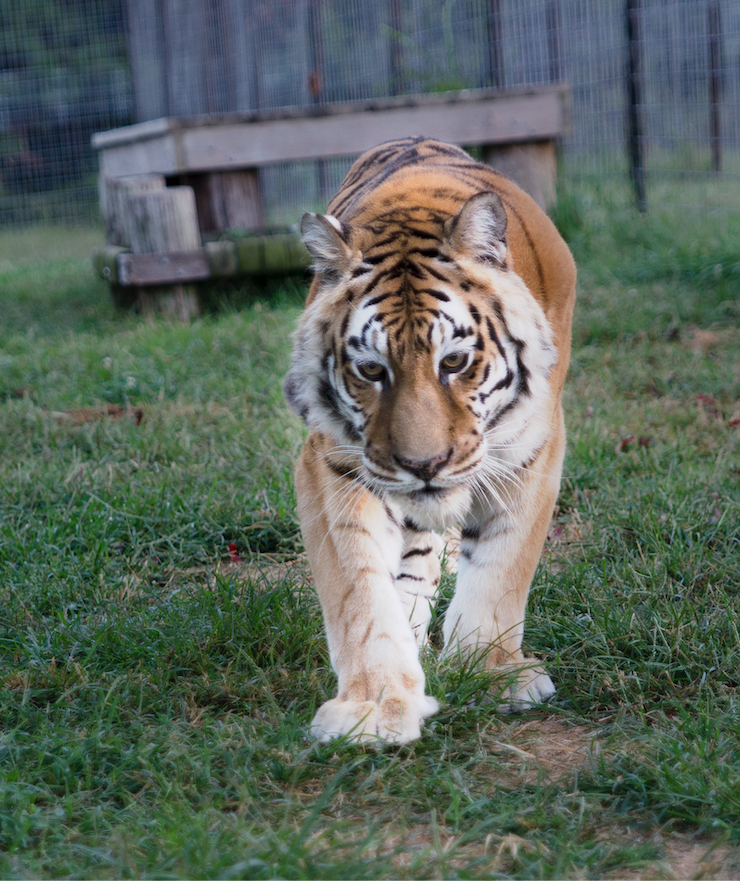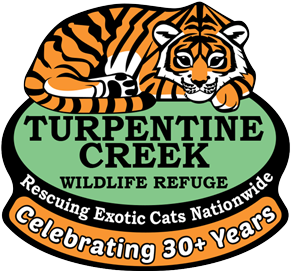
If you have supported TCWR through the years, you know the importance and value of proper nutrition for each animal’s quality of life. Many of the animals TCWR rescues are from private owners or are victims of the exotic pet trade and suffer from malnutrition, a condition commonly diagnosed in animals rescued by reputable sanctuaries. Unfortunately, many face lifelong complications due to this form of neglect and abuse.

Looking back, Sierra was an influential big cat for which TCWR provided freedom. We rescued Sierra from Grapevine, Texas, as a three-year-old, declawed tiger in 1998. This tiny but resilient tiger had been living her life as a victim of the exotic pet trade. Her previous owner fed her dog food, which was insufficient in the vitamins and minerals required for a big cat and resulted in her suffering from metabolic bone disease, which would haunt her throughout her life.
Breeders commonly go to extreme costs to sell one of these animals and will tell the potential buyer things that may be attractive but inaccurate. Apex predators in the wild will catch whole prey items, consuming the bones, fur, intestines, etc. These parts provide essential nutrients like taurine, calcium, cobalamin and other vitamins predators need to survive.
Due to the metabolic bone disease, at a young age, Sierra developed severe kyphosis of the spine, and a narrowing of her pelvic canal, resulting in a lifetime of digestive issues and life-threatening concerns. Sierra had a strict boneless diet, augmented with calcium and other supplements like glucosamine and cod liver oil to help with pain and inflammation in her joints. Throughout her twenty years with TCWR, she endured major surgery for intestinal blockage and multiple enemas due to her physical deformities.
Her story resembles our infamous trio, Blackfire, Rocklyn, and Peyton. Like Sierra, these three are examples of why receiving proper nutrition is so critical at an early age. When these three cubs arrived at the Refuge in 2016 during our Colorado Project Rescue, they could not use their hind legs properly. The prognosis looked grim as x-rays showed they were suffering from abnormal skeletal development, low bone density, and multiple bone fractures caused by metabolic bone disease brought on by a lack of nutrition, specifically calcium. Caught at an early age, the TCWR team was able to begin an aggressive healthcare regimen to mitigate the effects of the inadequate nutrition the trio had experienced at their previous facility.
Sierra may have had fewer life-long complications if she had received aggressive healthcare in her adolescent years like the trio; however, that will remain unknown. Sierra enjoyed her life at TCWR and reveled in all the usual things tigers love doing: swimming, playing, frolicking in the grass, and greeting staff every day. Her legacy and story will live on as a means to continue creating awareness surrounding wild cat advocacy.
